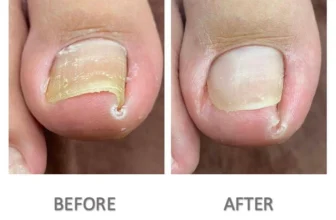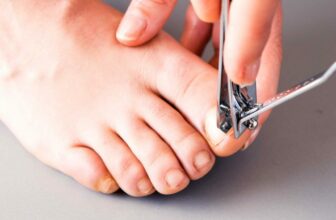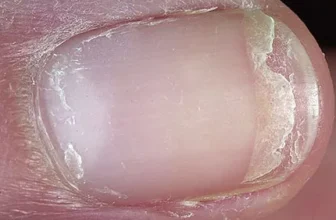
How to cut thick toenails is a concern for many, even though most of us don’t usually give much thought to cutting our toenails. Sometimes, we might notice our toenails snagging on our socks or looking a little unattractive. In such instances, a quick trim with a pair of clippers often does the trick.
However, when dealing with thick and tough toenails, it can be a bit more challenging.
If you don’t suffer from thick toenails and just have regular toenails, but would still like to know how to cut your toenails, check out our other article.
For insights on this and other nail care topics, feel free to explore our articles by clicking here.
Why do toenails get thick?
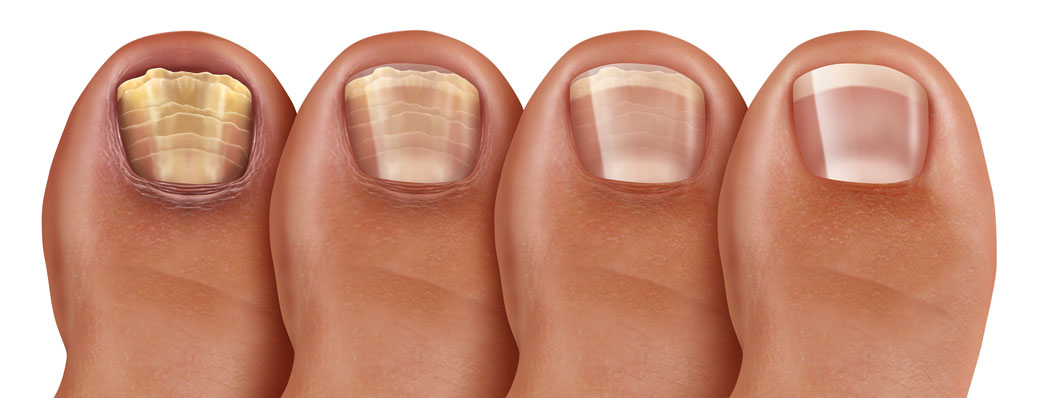
Toenails can become thicker for several reasons. They tend to get thicker as we age. Another cause can be trauma, such as an accident that causes damage to a toe, or wearing shoes that are too tight around the toes.
Fungal nail infections are also a common cause of thickened toenails, and for that there are thick toenail treatments.
It is particularly important to keep your toenail clippers clean, have your very own personal toenail clipper and avoid sharing them with other people.
After use, you should disinfect your clippers by wiping them with rubbing alcohol or diluted bleach, though do ensure your clippers are dry before putting them away to avoid rusting.
You should also avoid using the same clippers to trim your fingernails and toenails, and you shouldn’t share clippers between family members, as both of these can cause infection to spread.
How to cut thick toenails at home?
To tackle tough toenails, start by soaking your feet in warm water for five to 10 minutes to soften the toenails.
Then use a pair of clippers designed specifically for tackling the thicker nails on your toes, read our Swissklip review to know more about the Heavy Duty Toenail Clippers.
Start at the corner of the nail and make a series of small cuts to prevent the nail from splintering.
In this article, we will explore in more detail the best tools and techniques for thick toenails proper trimming.
Tips for Trimming Thick Toenails
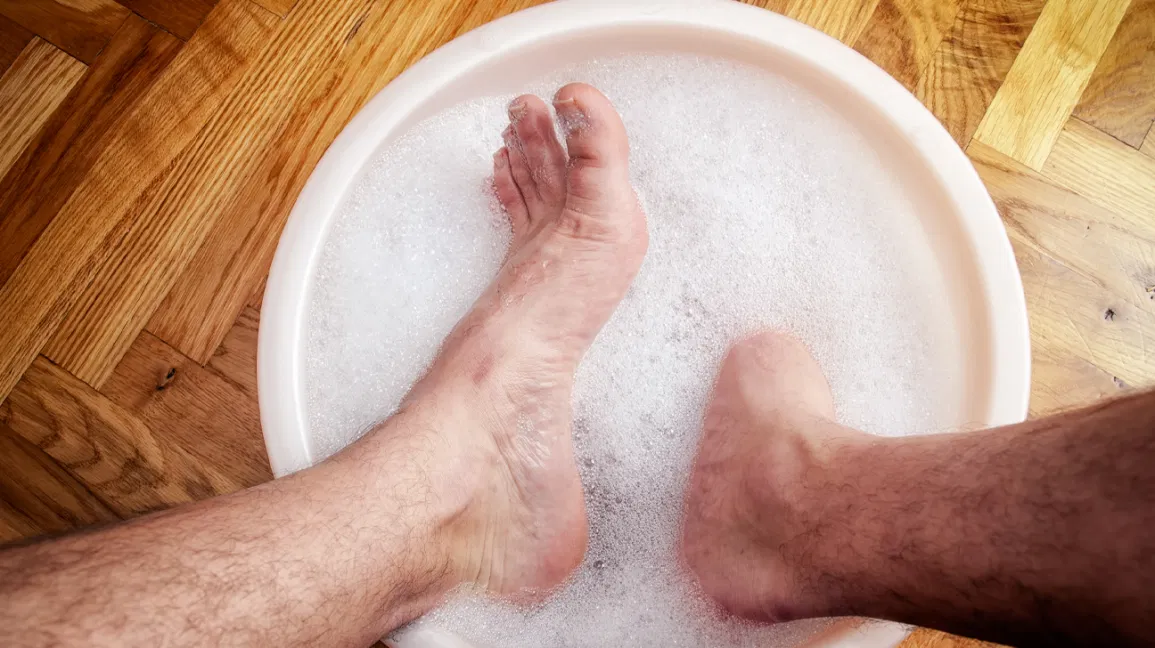
Proper trimming technique is essential for maintaining thick toenails and avoiding complications, such as ingrown nails or infections. Here are some helpful tips to ensure effective and safe trimming of thick toenails:
Softening nails before trimming
Soaking your feet in warm water for 10-15 minutes prior to trimming can help soften thick toenails, making them easier to cut. You can also add Epsom salt or a few drops of essential oil to the water for an added therapeutic effect.
Proper technique for cutting straight across
When trimming thick toenails, it’s important to cut straight across to avoid creating sharp edges that can lead to ingrown nails. If necessary, use smaller cuts to work your way across the nail, and avoid rounding the corners or cutting too close to the skin.
Avoiding over-trimming
Be cautious not to trim your nails too short, as this can lead to increased pressure on the nail bed and the risk of ingrown nails or infections. Aim to leave a small amount of white at the tip of the nail for optimal nail health.
Maintaining a consistent trimming routine

Establishing a regular nail-trimming schedule can help prevent thick toenails from becoming too long or difficult to manage. Read this article to know how long should toenails be. Depending on the growth rate of your nails, this may require trimming every two to four weeks.
By following these tips and using the right toenail clippers specifically designed for thick toenails, you can maintain healthy, well-groomed nails with ease. Proper trimming technique and a consistent nail care routine can help prevent potential complications and ensure that your nails remain in optimal condition.
Filing and smoothing edges
After trimming your thick toenails, it’s essential to file and smooth any rough or sharp edges. Use a gentle, back-and-forth motion with a nail file, working your way around the nail’s edge. Filing your nails can help prevent snagging or tearing, as well as reducing the risk of ingrown nails.
Moisturizing your nails and cuticles
Proper hydration is crucial for maintaining healthy nails and cuticles. After trimming and filing your thick toenails, apply a moisturizing cream or oil to your nails and cuticles. This will help keep them soft, supple, and less prone to splitting or breaking.
Addressing any signs of infection or worsening conditions
If you notice any signs of infection, such as redness, swelling, pain, or discharge, consult a medical professional for proper evaluation and treatment. Additionally, if your thick toenails are accompanied by a persistent, foul odor or worsen despite proper nail care, seek the advice of a podiatrist or dermatologist.
By incorporating these tips into your nail care routine, you can effectively manage thick toenails and maintain their health and appearance. Regularly using specialized toenail clippers for thick toenails, alongside proper trimming techniques and nail care practices, will help you achieve optimal nail health and prevent potential complications.
Remember that in some cases, thick nails can be an indicator of an underlying health issue, so seeking professional advice when necessary is crucial for ensuring your overall well-being.
Do you need to be careful when cutting thick toenails? Precautions and Safety Tips
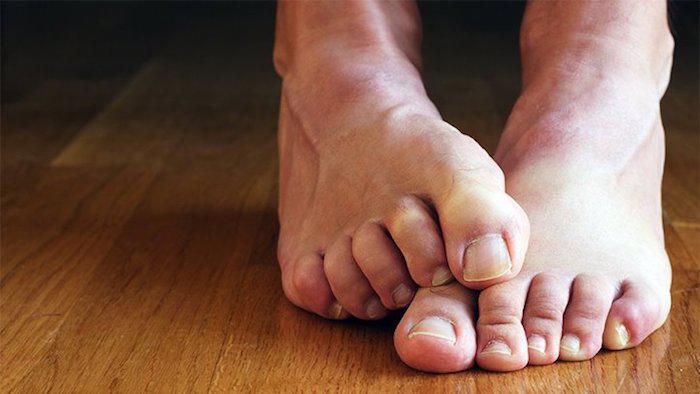
Toenail clippers have to be sharp to cut through the thicker nails on your toes, so anyone should take care when cutting their toenails. However, those with thick toenails will probably find they need to apply a bit more pressure, so take particular care not to damage the surrounding skin.
In addition to this, people with diabetes, those with poor circulation, those with reduced sensation in their feet, those who bleed excessively and those who take a long time to heal should be particularly careful.
Proper care and attention are crucial when trimming thick nails to prevent potential injuries, complications, or discomfort. Here are some precautions and safety tips to consider when trimming thick nails:
Trimming in a well-lit area
Ensure that the area where you trim your nails is well-lit so that you can see clearly and avoid accidental cuts or injuries. This is particularly important when dealing with thick nails, as precision and visibility are crucial for a safe and effective trimming experience.
Sanitizing tools and hands

Before and after trimming your nails, sanitize your tools and wash your hands thoroughly. This will help prevent the spread of bacteria and reduce the risk of infection.
Trimming carefully around sensitive areas
When trimming thick nails, be cautious not to cut too close to the skin or cuticle, as this can cause pain, discomfort, or even infection. Use the appropriate toenail clipper for thick nails and take your time to ensure precise and careful trimming.
Seeking professional help when necessary
If you are unsure about trimming your thick nails or have concerns about their condition, it may be best to consult a healthcare professional, such as a podiatrist or a certified medical nail technician. These professionals can provide guidance and assistance in managing your thick nails safely and effectively.
Monitoring for signs of infection
After trimming your thick nails, keep an eye out for any signs of infection, such as redness, swelling, pain, or discharge. If you notice any of these symptoms, seek medical advice promptly to address the issue and prevent complications.
Avoiding forceful trimming or cutting
When dealing with thick nails, avoid using excessive force or cutting at awkward angles, as this can lead to injuries, ingrown nails, or damage to the nail bed. Instead, use specialized toenail clippers designed for thick nails and employ a gentle, controlled approach.
Soaking feet before trimming
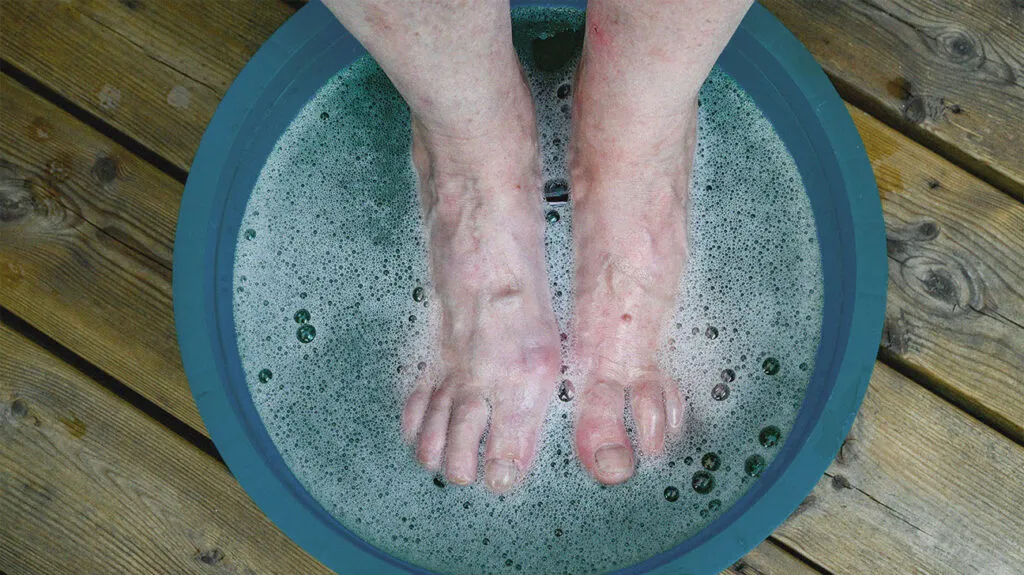
Soaking your feet in warm water for 10-15 minutes before trimming your thick nails can help soften them, making it easier to cut through the nail without causing damage or discomfort. Adding Epsom salt or essential oils to the water can provide additional therapeutic benefits.
Addressing underlying health issues
Thick nails can sometimes be a symptom of an underlying health issue, such as fungal infections, psoriasis, or diabetes. If you suspect that your thick nails may be related to a medical condition, consult a healthcare professional for proper evaluation and treatment.
By following these precautions and safety tips, you can effectively manage and trim your thick nails while minimizing the risk of injuries or complications. Utilizing the appropriate tools and techniques, along with seeking professional guidance when needed, will help you maintain healthy, well-groomed nails and prevent potential issues associated with thick nails. Remember, proper nail care is an essential part of maintaining overall foot health, and investing time and effort into managing your thick nails can lead to improved comfort and well-being.
What’s the best technique for cutting thick toenails?
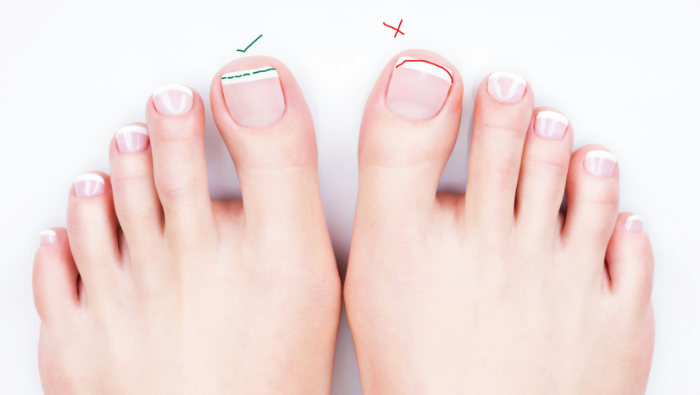
How to trim thick toenails? It is best to start from one corner and make small cuts. This helps to avoid splitting or splintering the nail. When trimming thick toenails it is important to cut the nail straight across, as a curved edge can encourage painful ingrowing toenails to form.
After trimming your nails, it’s a good idea to use an emery board to sand away any rough edges. Thickened toenails are often caused by a fungal infection or if your toenails are too long, so it’s better to know how long should toenails be and also a good idea to use an anti-fungal treatment.
What is the best tool for cutting thick toenails?
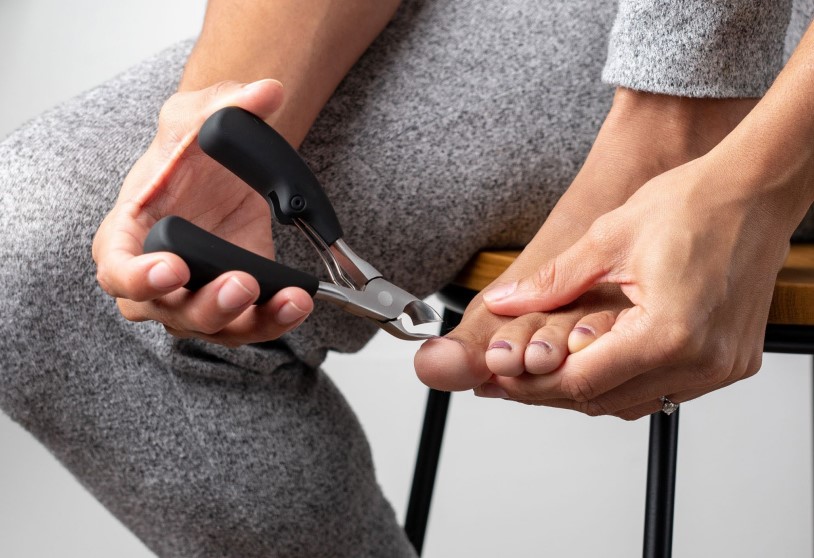
It is vital to use purpose-made toenail clippers. Fingernail clippers are designed for smaller nails, so will often have a tighter curve than you would want for your toenails, which should be cut straight to avoid painful ingrowing toenails.
Look for toenail clippers for thick curved toenails with handles that are designed to be held in the whole hand, rather than just with your fingertips, allowing you to get a firmer, stronger grip.
Toenail Clippers for thick toe nails have large, ergonomically designed handles, making them the ideal choice.
For those who are wondering how to cut thick toenails with fungus, there are specially designed toenail clippers with a number of other features that make them perfect for this purpose.
They have laser-cut curved blades which are designed for precision trimming and are double-sharpened so they will cut through even the thickest nails with ease.
They are also made from surgical-grade stainless steel, making them durable and long-lasting, plus the jaws open extra-wide, which means they can tackle even the thickest toenails with ease.
Why should you soak your feet before cutting thick toenails?

Generally speaking, it is better to cut your nails when they are dry, as wet nails can be trickier to trim, being prone to tearing, bending or splitting. However, if your toenails are particularly thick, it is a good idea to soak them first to help soften them.
Some people will find their toenails are sufficiently soft after a shower, while others may choose to trim their toenails straight after a bath. Alternatively, you could soak your feet in a basin of warm water for five to 10 minutes.
If you’ve got the time to pamper yourself, you could add Epsom salts or aromatherapy oils to the water, or maybe even dim the lights and light a few candles to really get into the spirit!
However you choose to soak your toenails, make sure you dry your feet thoroughly afterwards with a towel, carefully drying in between the toes.
Final Thoughts on Mastering Thick Toenail Trimming
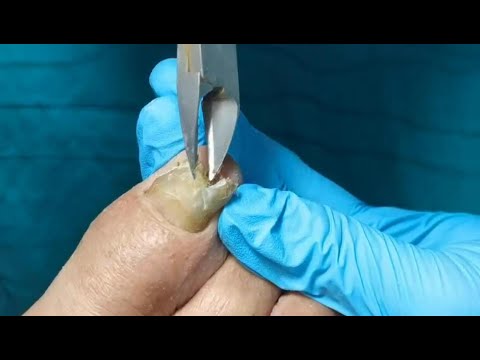
Mastering the art of cutting thick toenails is a pivotal skill in maintaining both your comfort and foot health. This comprehensive guide has equipped you with an arsenal of knowledge, from selecting the best tools like purpose-made toenail clippers to adopting the finest techniques for a safe and efficient trimming session.
Remember, the key to successful trimming lies in a meticulous routine that incorporates softening your nails to prevent splitting, and cutting straight across to avoid ingrown toenails.
It’s not just about snipping away; it’s about adopting a technique that preserves the health and integrity of your toenails.
Moreover, understanding when to seek professional advice can save you from potential complications, offering a safeguard against infections and other nail-related ailments.
As you venture into the world of foot care, keep these tips at the forefront of your grooming regimen. Cutting thick toenails need not be a herculean task; with the right approach, it can seamlessly integrate into your personal care routine, ensuring not only aesthetically pleasing results but also fostering a happier, healthier you.
Make sure to revisit this guide whenever you find yourself grappling with the challenges of maintaining thick toenails, and step forward with confidence and ease.



